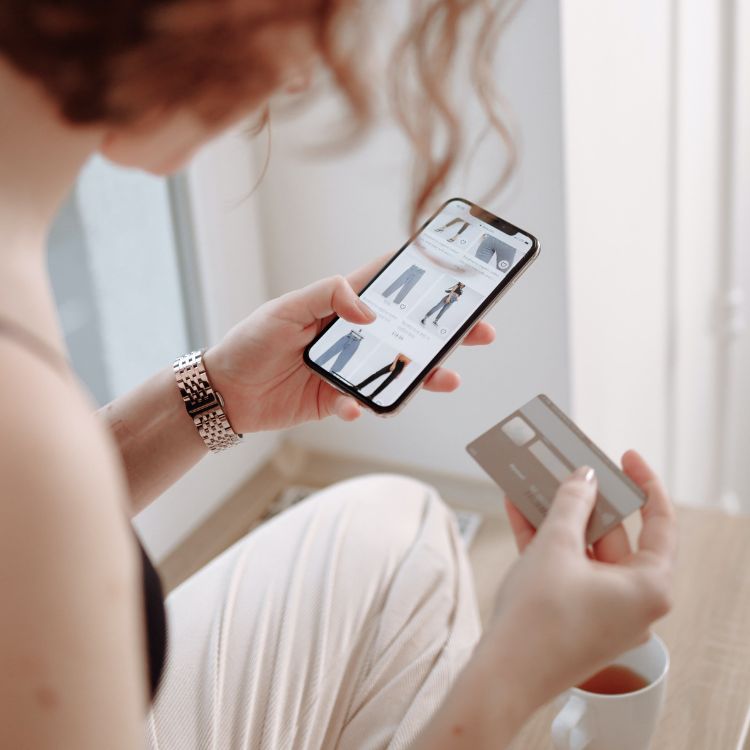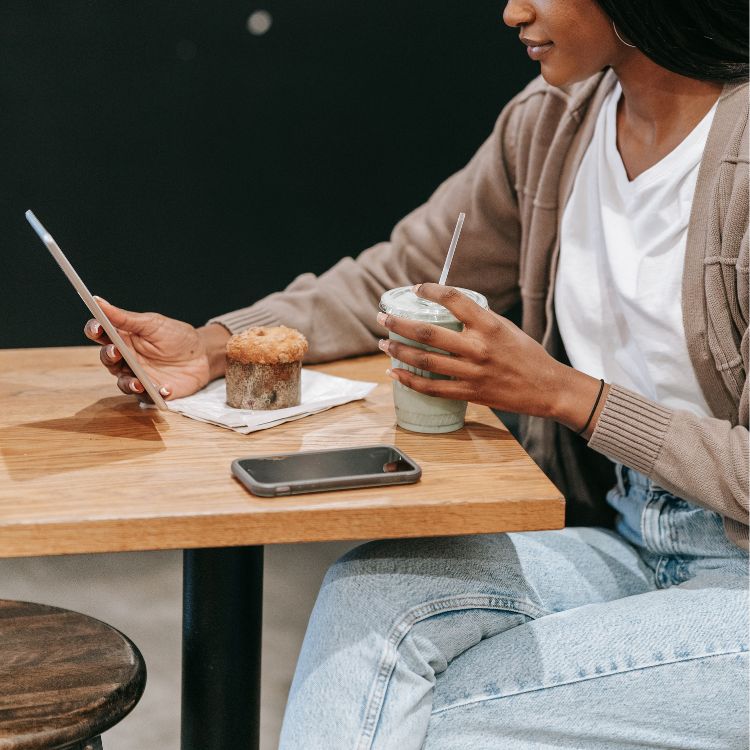Changing your Starbucks order from a grande to a venti, getting a deluxe pedicure instead of the less expensive option, purchasing the newest iPhone even though your current model works just fine — these are common upgrades that happen as we earn more money in our careers because we can suddenly “afford” these luxuries. What were once treats become a new standard of living, and you eventually get used to paying for this new lifestyle. Before you know it, the extra money you started making is being spent rather than saved or invested, and you’re back to living paycheck to paycheck.
This phenomenon, known as lifestyle creep or lifestyle inflation, occurs when your spending increases as your income increases. This financial predicament isn’t new by any means, but seeing our peers and influencers on social media share their purchases definitely hasn’t made it easier. If you’re experiencing lifestyle creep, read on for six easy and expert-backed tips to improve your finances and kick lifestyle creep to the curb.
How to Avoid Lifestyle Creep
1. Change your mindset
With media and advertising constantly bombarding us with messages that we’re just one more purchase away from feeling fulfilled, it can be hard to curb spending. If you can’t resist the urge to swipe up on an influencer’s link or partake in your favorite store’s sale, it may be worth examining why you feel like you need more stuff. “A lot of people shop when they’re bored or sad, and when you’re in a negative mindset you can justify almost any expense,” says Kara Perez, Founder of Bravely Go. When shopping or scrolling on social media, consider asking yourself why you feel influenced to make a purchase. Are you trying to meet another need? Do you want to own something just because someone else does? Do you think buying an item will solve a much larger problem in your life? Also, there’s no shame or wrong answers here, but if you’re trying to save money, being mindful of why you’re spending money can help you cut back on unnecessary purchases.
2. Review your expenses monthly
Looking through my bank statement is one of my least favorite activities, but it’s a helpful practice to identify unnecessary expenses. Personal finance writer and owner of This Online World Tom Blake suggests taking Saturday or Sunday to review your spending. “Go over your previous spending for the week and account statements,” he says. “Look for areas of increased spending. Once you identify these areas, set a line in the sand for how much money you can spend on those categories per month and stay within your budget.” He also suggests identifying purchases that make you feel buyer’s remorse. This can help you better understand your personal and financial values. Perez adds that identifying the purchases that actually bring you joy, and the ones you could have done without, can help you cut down on mindless spending.
3. Use the 50/30/20 rule when budgeting
Having a budget is one of the easiest ways to keep your spending on track, but it can be tough to know where to start. Luckily, Founder and Resident Personal Finance Expert at savvynewcanadians.com, Enoch Omololu has a method to make it easier. He recommends using the 50/30/20 rule when creating your budget. “One of the key strategies I advocate for is following the 50/30/20 rule—spending 50% of your income on needs, 30% on wants, and funneling the remaining 20% into savings or debt reduction,” he says. “It’s simple, it’s efficient, and most importantly, it’s flexible.” In order for this method to be effective, it’s important to distinguish needs vs. wants. Needs are basics like food, housing, insurance, etc. while wants are things you could live without like designer clothes, the latest iPhone, or getting your nails done.
4. Pay in cash
Do you remember getting cash for your birthday or Christmas as a kid? It almost pained you to spend it, right? Because once that crisp $20 bill was gone, your wallet was empty. This money-saving tip plays into that same idea. Omololu recommends using cash to curb your spending. “Parting with physical bills has a psychological impact that using plastic doesn’t. It’s like you can almost feel your wallet getting lighter with each purchase, which can be a powerful deterrent to unnecessary spending,” he says.
Similarly, Logan Lindabury, CPA and founder of Friday FinTips, suggests setting aside enough money in cash to pay for something you want but notes that you don’t actually have to buy it in cash. Feel free to pay with a credit card so you can accumulate points, but make sure you have the money on hand to immediately pay it off. He also suggests waiting another month or so to make the purchase even if you’ve already saved enough money, because you may decide you don’t need or want the item after all.
5. Define your long-term financial goals
When I decided I wanted to buy a home a few years ago, I realized I had to reprioritize my spending. No more nail salon appointments, no more impromptu purchases at Target. I started asking myself if I wanted to spend money on an item or if I’d rather put that money toward a house, and most of the time, I chose to save my money. Defining long-term financial goals like this can help you avoid unnecessary spending.
Money and financial literacy coach Kathryn Rossi encourages people to evaluate their goals when it comes to spending. “Start by identifying what truly matters to you. It could be anything from supporting local businesses, investing in your health, to saving for a down payment for a home. Take the time to deeply reflect on your values,” she says. “Equally important is recognizing what isn’t important to you. If brand names, dining out, or having the newest iPhone don’t align with your values, then these may be areas where you can cut back on spending.”
6. Resist the urge to keep up with the Joneses
I have a friend who has a new luxury handbag almost every time I see her. She works very hard and this is one of the ways she treats herself (and rightfully so!), but I’m not gonna lie, I’m very jealous. I often leave our interactions looking up the prices of Louis Vuitton bags and scouring the internet to find a discount. Do I need a new purse? Absolutely not. But do I want a luxury bag like my friend has? Heck yeah! This is the conversation that plays in my head whenever I begin to spiral down this path, and I have to remind myself that I have bigger financial goals that should come first. I’ve also learned that my version of treating myself doesn’t have to look like my friend’s or anyone else’s. Small things like getting my nails done or buying a dress I’ve been eyeing make me feel like I’m enjoying my life and my money without jeopardizing my goals.
“Rather than comparing yourself to others and striving to match their lifestyle, it is crucial to prioritize personal happiness and fulfillment,” says Chris Muller, Vice President of Money Under 30. “Taking the time to identify your own values and financial goals allows you to make intentional choices aligned with what truly matters to you. By focusing on your own needs and desires, you can avoid the temptation of unnecessary spending and maintain a sustainable and satisfying lifestyle.”
The Takeaway
Ultimately, it pays to be mindful of your spending (no pun intended), but it’s also important to enjoy your life. It’s human nature to want things that aren’t necessities, and you should allow yourself those little luxuries. As long as you can afford it and it doesn’t compromise your values or larger financial goals, go ahead and treat yo self.




